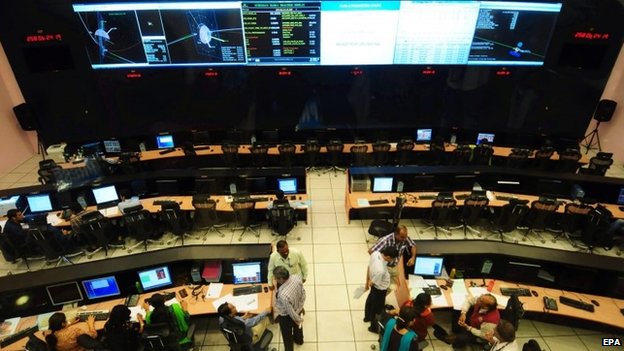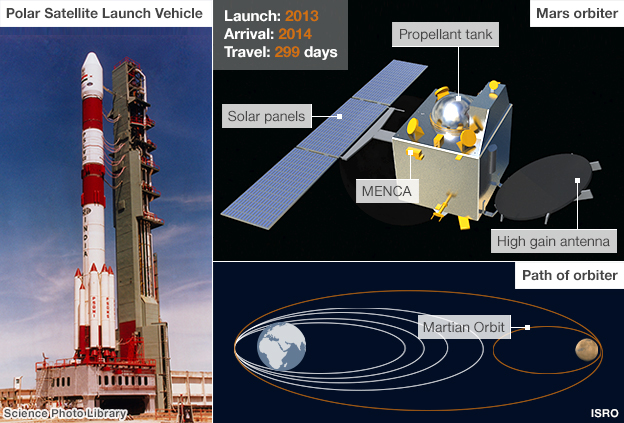 India’s maiden mission to Mars, the Mangalyaan, has arrived in orbit after a 300-day marathon covering over 670 million kilometres (420 million miles). Science writer Pallava Bagla traced its journey as it neared the Red Planet.
India’s maiden mission to Mars, the Mangalyaan, has arrived in orbit after a 300-day marathon covering over 670 million kilometres (420 million miles). Science writer Pallava Bagla traced its journey as it neared the Red Planet.
On the morning of 24 September, the Indian Space Research Organisation (Isro) slowed down the spacecraft sufficiently so it could be caught in the orbit of Mars.
“India will become the first Asian country to have achieved this and if it happens in the maiden attempt itself, India could become the first country in the world to have reached distant Mars on its own steam in the first attempt,” said Isro chairman K Radhakrishnan as it approached.
Both Russia and the US failed in their maiden attempts. The first Chinese mission to Mars, called Yinghuo-1, failed in 2011 alongside the Russian Phobos-Grunt mission with which it was launched. Earlier in 1998, the Japanese mission to Mars ran out of fuel and was lost.
Undoubtedly, India – a late starter – is way ahead of its Asian rivals in trying to get to the Red Planet.
“We are really not racing with anyone, but with ourselves to reach the next level of excellence,” said Mr Radhakrishnan.
‘Pink of health’
India’s Mars Orbiter Mission (MOM) – an indigenously made unmanned robotic mission weighing 1,350kg (2,976lb) – was launched from the rocket port at Sriharikota on the coast of the Bay of Bengal on a balmy afternoon on 5 November last year.
Since then, the mission “has been in the pink of health”, says Isro, and has been cruising at breakneck speed to reach close to Mars, half-way around the Sun.








